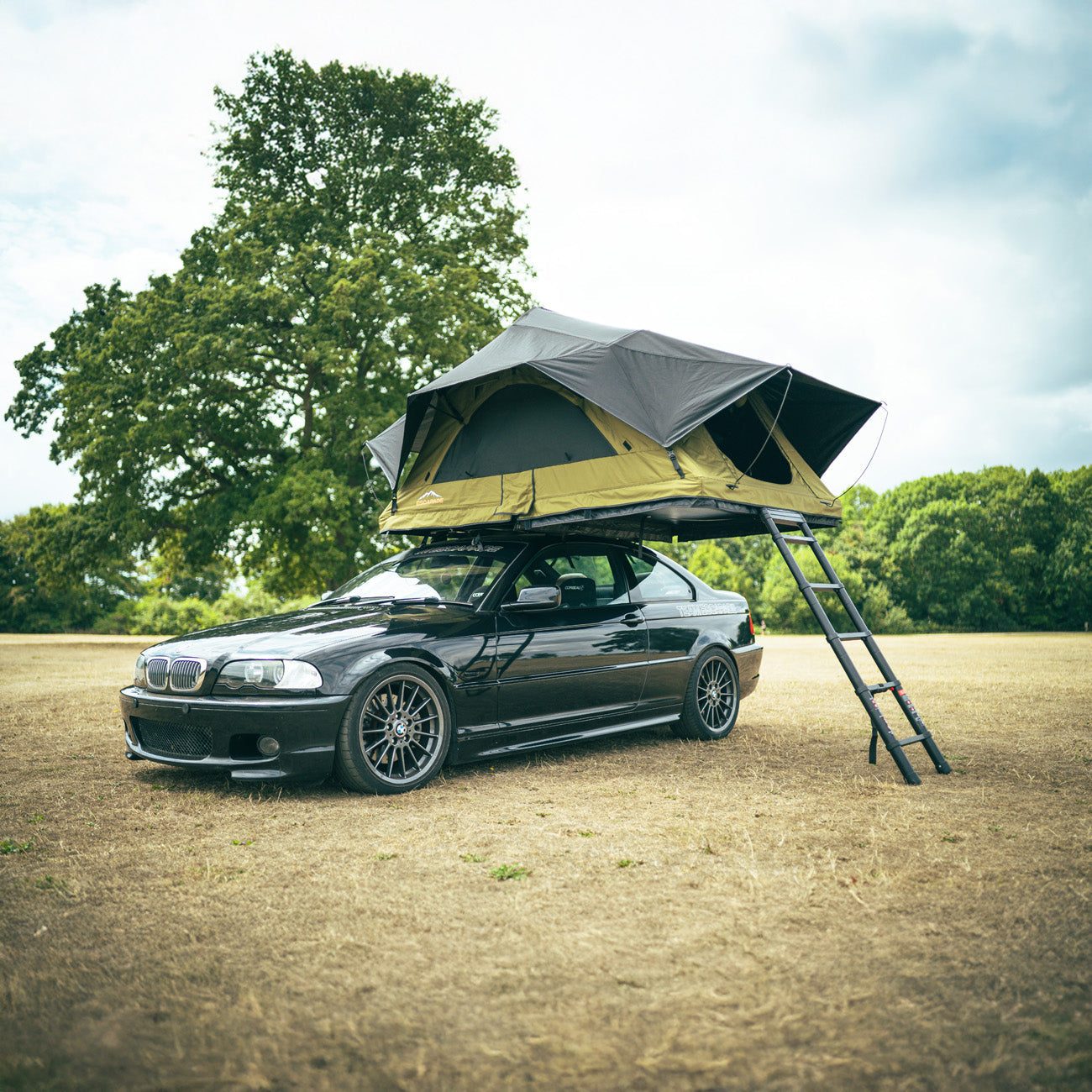When most people ask “what is the best roof tent?” they’re really asking: which tent is worth my money, will last the longest, and perform when it matters?
The truth is, the best roof tent isn’t just the one that looks good online. It’s the one built properly from the right materials, with no shortcuts hidden beneath the fabric. Here’s what you need to know about manufacturing and what makes some tents stand head and shoulders above the rest.
Aluminium vs Fibreglass: The Shell Matters
A roof tent’s outer shell is its first line of defence against the elements. Many budget tents cut costs with thin fibreglass or even ABS plastic. These are lighter on the wallet but crack easily, degrade in UV, and leave you with a tent that looks tired after a season or two.


Photos: Powder-coated aluminium hard-shell vs UV-damaged ABS plastic shell
The best roof tents use powder-coated aluminium. It’s tougher, corrosion-resistant, and shrugs off years of rain, sun, and road grit. Unlike raw aluminium, which can oxidise and stain, powder coating provides a protective layer that keeps the tent looking sharp for years.
Our Horizon Roof Tent and Discovery Roof Tent are both built on this principle, with strong aluminium shells designed to handle British weather and beyond.
Fabric Quality: Don’t Fall for Thin Weave
The canvas is where many manufacturers quietly cut costs. Lightweight polyester may look fine in the showroom, but it tears more easily, flaps in the wind, and struggles to keep you dry in heavy rain.

High-quality roof tents use a poly-cotton ripstop canvas, usually 280gsm or higher. This blend balances breathability with strength. The ripstop weave stops small tears from spreading, while the heavier weight keeps noise down and insulation up. Add a proper waterproof coating, and you’ve got a tent that performs year-round.
Our THRE360 Roof Tent uses heavyweight canvas and blackout interiors to keep you warm, dry, and well-rested wherever you travel.
Zips, Seals, and Stitching: The Hidden Weak Spots
When you’re camping, it’s not the flashy features that fail first—it’s the details. Cheap zips that snag or burst, seals that leak after a season, stitching that unravels at stress points.
Look for tents that use YKK zips, double stitching on all load-bearing seams, and properly sealed entry points. The best roof tents are built with the same mindset as expedition gear: reliable in every detail, even the ones you can’t see.

This focus on detail also applies to our accessories like the 270° Awning and Summit Awning Room, both designed to withstand heavy use in tough conditions.
Mattresses and Comfort: More Than an Afterthought
You’ll spend more time sleeping in a roof tent than admiring its exterior. Many budget tents come with a thin foam pad that feels like camping in a student mattress.
The best roof tents use high-density memory foam mattresses, often with removable covers for easy cleaning. Combined with blackout linings, this transforms a tent from a novelty into a genuinely comfortable place to rest after a long day outdoors.

Every Escapade roof tent—from the Discovery to the Summit—includes a mattress designed with real comfort in mind.
Ease of Setup: Poles vs. Smart Engineering
Another tell-tale sign of good manufacturing is how a tent sets up. Many cheaper designs rely on extra poles, pegs, and fiddly parts that turn setup into a chore.
Premium tents are engineered to open with minimal effort—gas struts, telescopic poles built into the frame, and locking mechanisms that keep everything tight and secure. You should be able to arrive, pop it open, and be ready for bed in minutes.


Our THRE360 and Horizon prove this point—fast, simple, and reliable setups without unnecessary poles or parts.
So, What is the Best Roof Tent?
The best roof tent is one that doesn’t hide shortcuts. It’s built from powder-coated aluminium, ripstop canvas, quality zips and seals, and has a comfortable mattress inside. It’s designed to last, not just impress in the first season.
At Escapade, that’s exactly what we stand for. We design roof tents for people who want the real deal: quality that holds up to years of adventure, not just the cheapest option in the checkout.
And it doesn’t stop with the tent. Add an awning, a roof rack, or even a shower tent to create a full setup that transforms your vehicle into a true basecamp.
If you’re comparing tents, don’t just look at the photos. Look at what they’re made of. Because when you’re miles from home, it’s manufacturing—not marketing—that defines the best roof tent.
FAQs
What makes a roof tent the best?
A roof tent’s quality comes down to its materials and construction—powder-coated aluminium shells, ripstop poly-cotton canvas, durable zips, and a high-quality mattress are all key indicators.
Are hard-shell or soft shell roof tents better?
Hard shell tents (especially aluminium ones) are more durable and quicker to set up. Soft shells can be lighter and offer more space, but often rely on extra poles and less durable fabrics.
How long should a good roof tent last?
With the right build quality, a premium roof tent should last 5–10 years of regular use, if not more. Budget tents can show wear after just a season.
What’s the most comfortable roof tent?
Comfort depends on both the mattress and the tent fabric. A memory foam mattress with blackout canvas creates the best sleep environment. Our Summit Roof Tent is one of the most spacious and comfortable in the range. COMING SPRING 2026
Ready to see the difference?
Explore Escapade’s full range of roof tents and accessories to upgrade your adventures today.


Share:
Ford Raptor x Discovery Roof Tent Install: Watch the Full Setup on YouTube
112db to peace and tranquility in 1day | Series Land Rover camping, in the beautiful Lake District